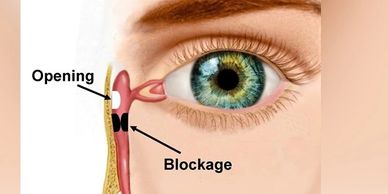Pediatric Ophthalmology
Refractive errors
Refractive errors
Refractive errors

Refractive error means that the shape of your eye does not bend light correctly, resulting in a blurred image. The main types of refractive errors are myopia (nearsightedness), hyperopia (farsightedness) and astigmatism. Although these may occur at any age but myopic is common in children and perhaps the most important cause of visual defect in school going children.
Amblyopia
Refractive errors
Refractive errors

Amblyopia is a vision development disorder in which an eye fails to achieve normal visual acuity, even with prescription eyeglasses or contact lenses. Also called lazy eye, amblyopia begins during infancy and early childhood. In most cases, only one eye is affected. Timely treatment with occlusion exercises helps to correct the disorder to some extent.
NLD Obstruction
Refractive errors
Allergic Conjunctivitis

Congenital nasolacrimal duct obstruction is a common condition causing excessive tearing or mucoid discharge from the eyes, due to blockage of the nasolacrimal duct system. Nasolacrimal duct obstruction affects as many as 20% children aged <1 year worldwide. It mostly resolves on its own rarely it may require probing of the lacrimal duct.
Allergic Conjunctivitis
Congenital Cataract and Glaucoma
Allergic Conjunctivitis

Allergic conjunctivitis is an eye inflammation caused by an allergic reaction to substances like pollen or mold spores. The inside of your eyelids and the covering of your eyeball have a membrane called the conjunctiva. The conjunctiva is susceptible to irritation from allergens, especially during hay fever season.
Squint
Congenital Cataract and Glaucoma
Congenital Cataract and Glaucoma

A squint, or strabismus, is a condition in which the eyes do not align properly. One eye turns inwards, upwards, downwards, or outwards, while the other one focuses at one spot. It can happen all the time or intermittently. It may require treatment in the form of glasses, occlusion therapy or surgery.
Congenital Cataract and Glaucoma
Congenital Cataract and Glaucoma
Congenital Cataract and Glaucoma

Congenital cataract and glaucoma are serious eye conditions which require intensive treatment depending on the age of the child.
Kushwaha Eye Hospital
Copyright © 2020 Kushwaha Eye Hospital - All Rights Reserved.
Powered by GoDaddy Website Builder